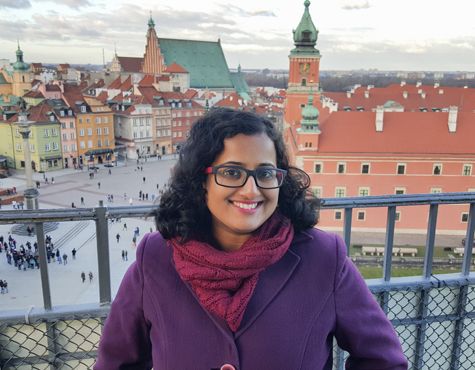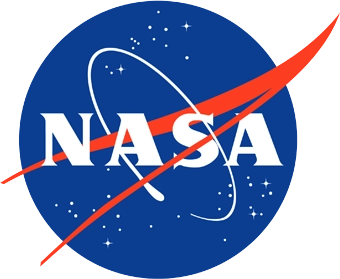Early Career Scientist Spotlight
Dr. Nazma Islam
High Energy Astrophysicist
X-ray Astrophysics Laboratory
What inspired you to pursue a career in Astrophysics?
I have been interested in astronomy since childhood. I remember looking at the Moon, Saturn’s rings, and Comet Hale-Bopp, which appeared in 1997, through a telescope for the first time and I was wonderstruck! Since then, I have been a part of amateur astronomy clubs during my school and college years, through which we organised regular star-gazing sessions, observations of meteor showers and solar and lunar eclipses, as well as various other public outreach programs. I had an opportunity to carry out a summer project in Astrophysics through a visiting student program, which gave me a glimpse of how research is carried out in Astrophysics. This was instrumental in encouraging me to pursue a career in Astrophysics.
What is your research focus?
The focus of my research is understanding the nature of accretion onto compact objects like black holes, neutron stars and white dwarfs, in systems called X-ray binaries. X-ray binaries are the remnants of supernova explosions and are considered as progenitors of double compact objects whose mergers are detected as gravitational waves in LIGO and Virgo. These are systems containing a main sequence star, like the Sun, or a supergiant star with a compact object (such as a black hole, neutron star, or white dwarf). The compact object extracts matter from the companion star by the process of accretion, which is most energetic process in the Universe. I observe them using various space-based and ground-based telescopes to study the inflows in the form of accretion disk and stellar winds, and outflows as jets in the system. We find similarities in the physics of accretion around black holes, neutron stars and white dwarfs, as well as in supermassive black holes present in galaxies, which are related to the mass, spin, nature of the compact object, and the companion star as well as their magnetic fields. Another area of my research is studying the population of X-ray binaries in the Milky Way and comparing them with the population detected in other galaxies. We find the population of X-ray binaries to be strongly dependent on various factors, including star formation rate, stellar age, and metallicity of the galaxy.
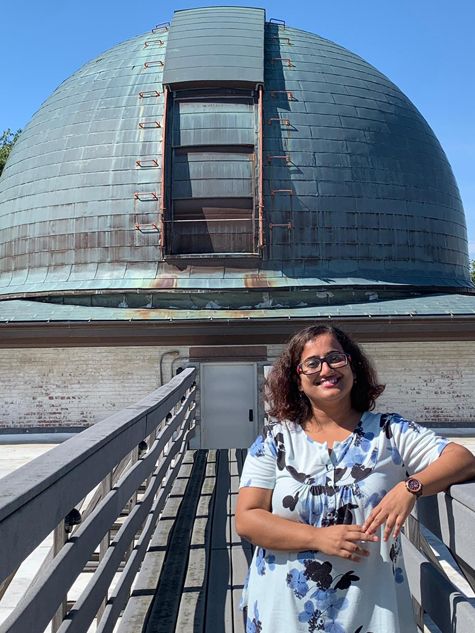
Credit: Nazma Islam
If you were to expand your current research focus, what new topic would you explore?
There are few methods of determining the nature of the compact object (whether a black hole or a neutron star) in an X-ray emitting source. It gets more complicated for X-ray sources in other galaxies due to fewer X-ray photons. Many of these X-ray sources are found to be of exciting variety like intermediate mass black holes, pulsating Ultra-Luminous X-ray sources, or magnetars showing Fast Radio Bursts, making it essential to identify these objects. I am currently exploring the use of machine learning techniques to identify these X-ray emitting sources. X-ray binaries are considered to be progenitors of the merger events which are detected by the current and next generation of gravitational wave detectors. These merger events are also found to have electro-magnetic counterparts, such as Gamma Ray Bursts. I would like to explore further the association of different masses and types of X-ray binaries in merger events with the detection of gravitational waves and electro-magnetic signatures.
What do you enjoy the most about your job?
Even after being in research for a decade, I still have a child-like curiosity towards the Universe. My favourite part of my job is that I try to fulfil this curiosity through my professional endeavours. I had an accepted research proposal asking for time on an X-ray telescope to observe a source which was the focus of my research. I was very excited when I got the data and it reminded me of the thrill I felt looking through an optical telescope during my amateur astronomy days. Another great aspect of my job is that I have the pleasure of interacting with brilliant scientists from different research areas, both at NASA and other places around the world, and expanding my knowledge from the stimulating conversations with them.
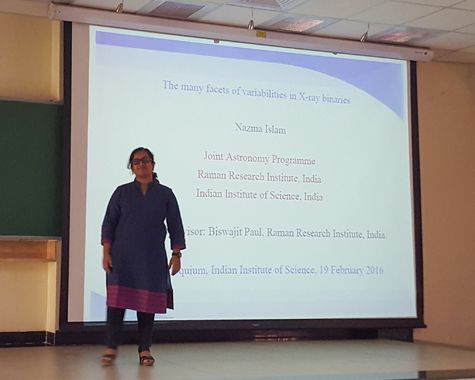
Credit: Nazma Islam
What is one of your favorite moments in your career so far?
One of my favourite moments in my career was when I got selected for the Joint Astronomy Programme in Indian Institute of Science, India. It is a prestigious fellowship in Astronomy and Astrophysics in India which allows the flexibility of carrying out research towards your PhD in any one of the four participating research institutes. For me, it marked the start of my journey towards becoming an Astrophysicist. My other favourite and important milestone in my career was the day I defended my PhD thesis. It was a culmination of four years of hard work, sweat, and tears!
What early career advice do you have for those looking to do what you do?
As a researcher, we need to constantly learn new skills and expand our knowledge in areas which are not exactly related to our field of expertise. It is important to talk to your colleagues and get involved in fruitful collaborations in projects you are interested in. A career in research requires communication skills to write good papers or research proposals and present your work, which takes practice. And finally, don't be afraid to step out of your comfort zone and pursue a project that you are interested in.
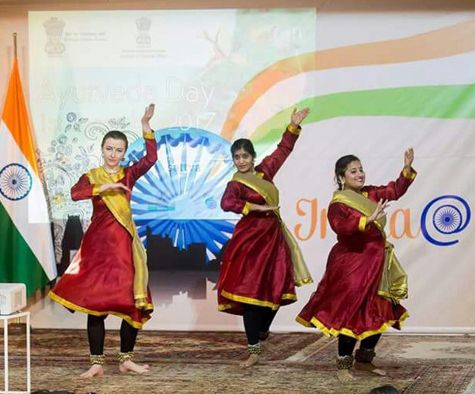
Credit: Indian Embassy, Poland
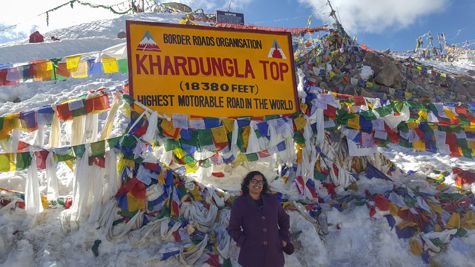
Credit: Nazma Islam
What do you like to do in your free time?
Art is an important part of my life. I enjoy music and dancing and have been involved in learning various dance forms throughout my life. Painting is a big stress reliever for me. Pre-pandemic, I loved travelling to interesting places, like a small town in the Himalayas or a tiny island in the middle of an ocean. I enjoy cooking different cuisines from all around the world.
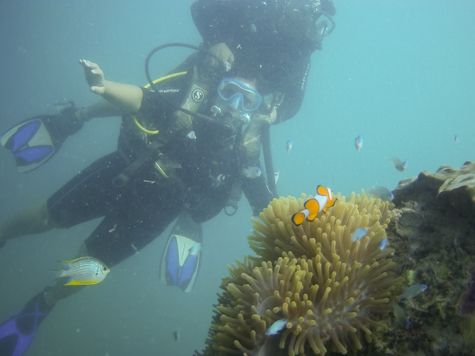
Credit: Nazma Islam
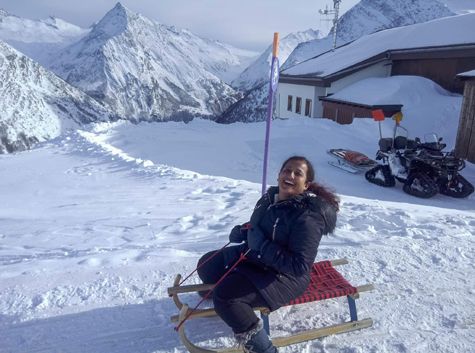
Credit: Nazma Islam
Biography
Home Town:
Kolkata, India
Undergraduate Degree:
Bachelor of Science, Physics Honours, Presidency University, Kolkata, India
Post-graduate Degrees:
Master of Science, Physics, Indian Institute of Technology, Kharagpur, India
Ph.D, Joint Astronomy Programme, Indian Institute of Science and Raman Research Institute, Bangalore, India
